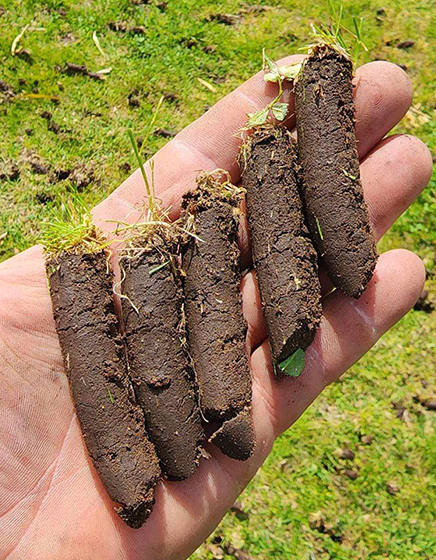Lawn aeration is the process of removing small plugs of soil from a lawn to improve the growth and health of the grass.
This is done by using a specialised tool called an aerator, which has hollow tines or spikes that penetrate the soil and remove small plugs of earth. These plugs of soil are then left on the surface of the lawn to decompose and enrich the soil, or they can be raked up.
The primary benefit of lawn aeration is that it improves the ability of water, air, and nutrients to reach the roots of the grass. When soil becomes compacted, it can become difficult for water and oxygen to penetrate the roots, which can lead to poor growth and a thin, unhealthy lawn.
By removing plugs of soil and creating small holes, aeration allows water, air, and nutrients to reach the roots more easily.
We cover a wide area around Adelaide – Check if we can come to you!
Aeration is usually done from spring through summer until mid-autumn, when grass is actively growing.
Your grass is working hard during this time to develop a stronger root system and aeration aids in that process. If you aerate during these seasons you allow pockets of air to transmit water and nutrients to the root system.
The best time to aerate your lawn will ultimately depend on the type of grass you have, as distinct types of grass have different growth patterns.
Aeration can be done manually by using a hand aerator or by using our powered machines.


Another advantage of aeration is that it can also help reduce thatch buildup. Thatch is a layer of dead and decomposing grass and other organic material that can form between the soil surface and the living grass.
While a small amount of thatch can be beneficial, too much can suffocate the grass and create a breeding ground for pests and disease. Aeration helps to break up thatch and promote healthy growth.
Overall, lawn aeration is an important practise for maintaining a healthy and attractive lawn.
It promotes root growth and improves water, air, and nutrient flow to the roots; it can also help reduce thatch buildup and create a lush, healthy lawn.